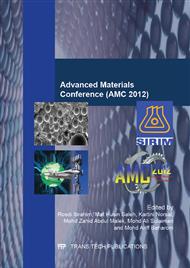p.139
p.144
p.149
p.155
p.164
p.169
p.175
p.180
p.184
Effect of Solid Loading on the Physical Properties of the Sintered Inconel 718 Using Metal Injection Moulding (MIM)
Abstract:
Inconel 718 has been widely used as a super alloy in aerospace application due to the high strength at elevated temperatures, satisfactory oxidation resistance and heat corrosion resistance. In this study, the Inconel 718 with different solid loading (System A - 50/50 vol.% and System B - 60/40 vol.%) has been fabricated using high technology of Metal Injection Moulding (MIM) process due to the cost effective technique for producing small, complex and precision parts in high volume compared with conventional method through machining. Through MIM, the binder system is one of the most important criteria in order to successfully fabricate the Inconel 718. Even though, the binder system is a temporary, but failure in the selection and removal of the binder system will affect on the final properties of the sintered parts. Therefore, the binder system based on palm oil derivative which is palm stearin has been formulated and developed. The rheological studies of the mixture between the powder and binders system have been determined properly in order to be successful during injection into injection moulding machine. After moulding, the binder holds the particles in place. The binder system has to be removed completely through debinding step. During debinding step, solvent debinding and thermal pyrolysis has been used to remove completely of the binder system. The debound part is then sintered to give the required physical properties.
Info:
Periodical:
Pages:
164-168
Citation:
Online since:
January 2014
Price:
Сopyright:
© 2014 Trans Tech Publications Ltd. All Rights Reserved
Share:
Citation:


